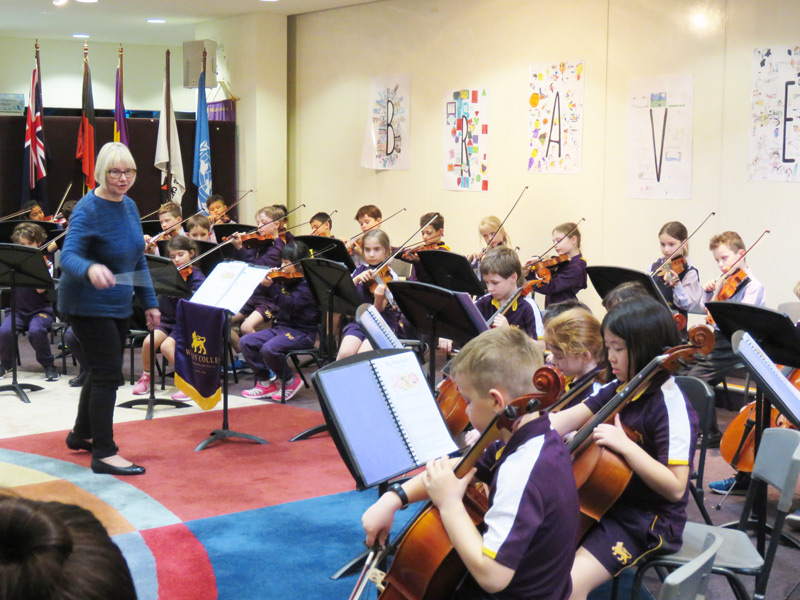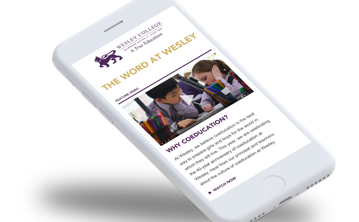
A casual observer at the St Kilda Road Campus Year 2 String Soirée in June couldn’t help but notice the large number of Year 2 students playing a stringed instrument – that’s because all the Year 2s were playing!
The Strings program is a core part of the weekly Year 2 curriculum at the St Kilda Road Junior School, with all Year 2 students taking small and large group classes in either the violin, viola or cello. The program has been in place at Junior School for many years, implicit recognition of the powerful effects that playing music has on brain development.
There are challenges to learning strings at Year 2 level, of course. As Strings teacher Louise Hildyard says, ‘Learning a stringed instrument is really hard. For the first few weeks I’m teaching them how to manage their shoulder rests, their bow, their instrument; but it’s valuable for learning to read, to communicate, do maths. It’s literacy and numeracy, but combined with the heart: music engages students on the level of feeling as well.’
Strings Program Director Judy Dempster says left and right hand coordination is a real challenge, as is the discipline of practice. ‘The expectation is students practise 10 minutes a day. Some do, some don’t! But it’s very good for self-esteem because of the discipline required to actually do it, as well as goal setting and achieving your goal. Eventually students become self-directed. Then there’s the challenge to both play in time and make a nice sound. We have to know the sound in our minds, ahead of time, what sort of sound we want to make. So it’s very beneficial for the brain.’
With the challenges, then, come enormous benefits – and it all starts at Year 2. Says Judy, ‘All students that continue with their instrument become members of the Year 3 and 4 Orchestra, and this is the feeder program that goes into the Senior School. The Year 2 program is like the seed for their ongoing development.’
The Strings program is a core part of the weekly Year 2 curriculum at the St Kilda Road Junior School, with all Year 2 students taking small and large group classes in either the violin, viola or cello. The program has been in place at Junior School for many years, implicit recognition of the powerful effects that playing music has on brain development.
There are challenges to learning strings at Year 2 level, of course. As Strings teacher Louise Hildyard says, ‘Learning a stringed instrument is really hard. For the first few weeks I’m teaching them how to manage their shoulder rests, their bow, their instrument; but it’s valuable for learning to read, to communicate, do maths. It’s literacy and numeracy, but combined with the heart: music engages students on the level of feeling as well.’
Strings Program Director Judy Dempster says left and right hand coordination is a real challenge, as is the discipline of practice. ‘The expectation is students practise 10 minutes a day. Some do, some don’t! But it’s very good for self-esteem because of the discipline required to actually do it, as well as goal setting and achieving your goal. Eventually students become self-directed. Then there’s the challenge to both play in time and make a nice sound. We have to know the sound in our minds, ahead of time, what sort of sound we want to make. So it’s very beneficial for the brain.’
With the challenges, then, come enormous benefits – and it all starts at Year 2. Says Judy, ‘All students that continue with their instrument become members of the Year 3 and 4 Orchestra, and this is the feeder program that goes into the Senior School. The Year 2 program is like the seed for their ongoing development.’
